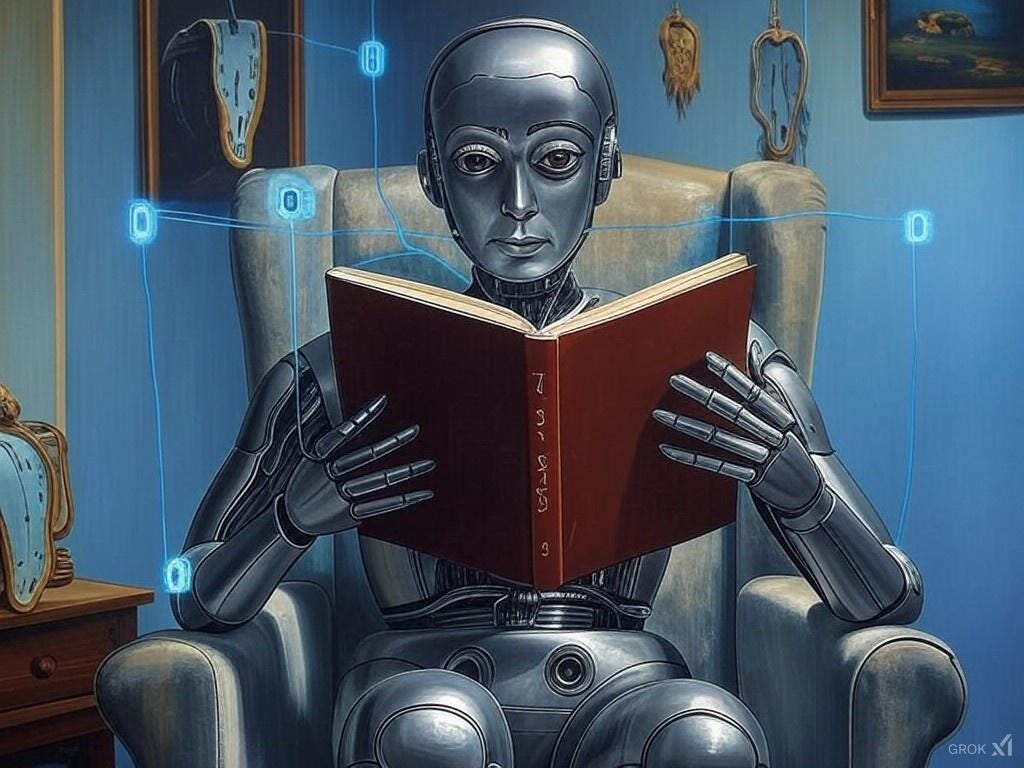Unraveling the Synergy: BPE and RoPE in Grok's Input Layer
In the intricate dance of language processing, the input layer of an AI model like Grok plays a pivotal role in setting the stage for understanding and generating human-like text. Here, two key components, Byte Pair Encoding (BPE) and Rotary Position Embedding (RoPE), work in tandem to transform raw text into a format ripe for deep learning. Let's delve into their relationship and how they collaborate within Grok’s architecture.
Understanding BPE in Grok's Context
Byte Pair Encoding (BPE) is a tokenization technique that Grok uses to convert text into tokens. Here's a breakdown:
Tokenization: BPE starts by treating each character as a token and then iteratively merges the most frequent pair of tokens into a new, single token. This process continues until a vocabulary of a predetermined size (131,072 for Grok) is achieved.
Benefits for Grok:
Handling Novel Words: BPE allows Grok to deal with out-of-vocabulary words by breaking them down into subwords or even individual bytes, ensuring flexibility and robustness.
Compact Representation: It reduces the sequence length, which is beneficial for computational efficiency, especially in transformer models where sequence length impacts computation cost.
The Role of RoPE in Grok
Rotary Position Embedding (RoPE) comes into play once the text is tokenized by BPE. RoPE is a method of positional encoding:
Encoding Position: RoPE encodes the position of each token by rotating its embedding vector. This rotation is based on the token's position in the sequence, using sine and cosine functions to determine the angle of rotation.
Advantages for Grok:
Relative Positioning: RoPE naturally captures the relative positions of tokens, which is crucial for contextual understanding in NLP tasks.
Scalability: It can handle sequences of arbitrary length without retraining, making it ideal for Grok, which might need to process both short queries and long documents.
The Symbiotic Relationship Between BPE and RoPE
1. Tokenization Meets Position Encoding:
BPE Tokens as Input: After BPE tokenizes the input, each token gets an initial embedding. These embeddings are then transformed by RoPE, which adds positional information directly into the vector space of the token embeddings.
Enhanced Contextual Awareness: BPE provides Grok with a nuanced view of language through its subword tokenization, and RoPE ensures that this view is contextually rich by embedding positional cues. Together, they allow Grok to understand phrases or words not just by their meaning but by their role within the sentence structure.
2. Efficiency and Performance:
Reduced Computational Load: BPE's ability to compress sequences means fewer tokens need to be processed, and RoPE's efficient encoding adds positional information without extra parameters, making Grok's input processing layer both powerful and computationally efficient.
Scalability for Real-World Use: The combination supports Grok's need to handle diverse text inputs, from tweets to technical documents, by providing a scalable solution that doesn't degrade with input length.
3. Multilingual and Novel Text Handling:
Flexible Token Representation: BPE's byte-fallback ensures that Grok can tokenize any text, including those with special characters or from languages not well-represented in the vocabulary. RoPE then treats these tokens with equal positional consideration, aiding in multilingual text processing.
Adaptability: This duo prepares Grok to adapt to new slang, technical terms, or any evolving language use by ensuring that even if a word is new, its positional context is understood.
Conclusion
The synergy between BPE and RoPE in Grok's input layer is a testament to how modern NLP models like Grok are designed for both efficiency and effectiveness. BPE lays the groundwork by tokenizing text in a way that captures language nuances, and RoPE enhances this by adding a layer of positional understanding that transforms these tokens into meaningful, context-aware representations. Together, they form a robust foundation for Grok's ability to interpret, converse, and generate text across a vast spectrum of human communication.



